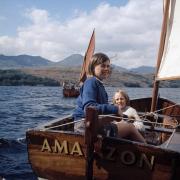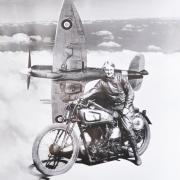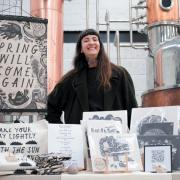Now that autumn is here and the days are gradually getting colder and darker, it is the perfect time to get cosy with a great book.
We think these famous classics with a link to Hampshire will be the perfect companions for a spot of hygge, so run a hot bath or grab a blanket, a hot cup of cocoa and get reading.
1. Mansfield Park by Jane Austen
The celebrated author was born in Steventon, lived in Southampton and Chawton and spent her final days in Winchester. But she only used an explicit Hampshire location in Mansfield Park, penned in 1814. Portsmouth provides the original impoverished dwelling of her heroine Fanny Price before she is taken in to live in the titular stately home by her rich uncle and indolent aunt.
2. Kipps by HG Wells
Although set in Folkestone, HG Wells’ 1905 tale of a simple draper’s assistant receiving an unexpected inheritance was undoubtedly inspired by the author’s own experiences in Southsea. Wells spent two years as a draper’s assistant at Hyde’s Drapery Emporium, which he described as an “indescribably tedious” life of “straightening up, putting away, fetching and carrying”.
3. The Children of the New Forest by Captain Marryat
Although author Captain Marryat lived in Norfolk, he frequently visited Hampshire to stay at his brother’s stately home – Chewton Glen. No doubt his visits inspired this classic 1847 novel, set during the English Civil War. It follows four orphans who are rescued from Parliamentary soldiers by a local verderer and have to adapt from their previously aristocratic lifestyle to living from the land.

4. Watership Down by Richard Adams
The source material for thousands of pre-teen nightmares as unwitting parents put the 1978 animated version on over successive Christmases, Richard Adams’ 1972 novel Watership Down is a gripping adventure of survival. After Fiver sees a vision of the rabbits’ Sandleford warren being destroyed, a group of bunnies escape to find a new home – the titular north Hampshire haven.
5. The Mating Season by PG Wodehouse
Arguably England’s finest comic author, PG Wodehouse never lived in Hampshire, but the county regularly forms the backdrop to his stories. Wodehouse’s 1949 Jeeves and Wooster novel is set in Deverill Hall, in fictional “King’s Deverill, Hants”. Wooster is instructed to take part in the village concert by his formidable Aunt Agatha to, in Bertie’s words, “stiffen up the programme with a bit of metropolitan talent” in a tale of switched identities, runaway dogs and questionable turns.
6. Nicholas Nickleby by Charles Dickens
Portsmouth’s most famous literary son returned to his birthplace in his third novel. Midway through the 1839 novel, Nicholas heads to Portsmouth to find work on a ship. While in the city, he happens upon touring theatre manager Vincent Crummles, who takes him on as a juvenile lead and playwright. It is the start of an upturn of fortunes for the embattled hero.

7. The Water Babies by Charles Kingsley
Rector of Eversley Charles Kingsley penned his most famous work – The Water Babies – as a satire on the reception of Charles Darwin’s evolutionary theories, as well as a critique of child labour laws. The 1863 story follows a young chimney sweep who, after falling into a river, is transformed into a water baby and is given a moral education.
8. The Natural History and Antiquities of Selborne by Gilbert White
This year marks the 300th anniversary of naturalist Gilbert White’s birth. Perhaps now is a good time to get acquainted with his most famous work. Never out of print since 1789, his book is a series of letters to leading British zoologist Thomas Pennant and barrister Daines Barrington detailing the natural history to be found around his Selborne home, from summer birds to thunderstorms.
9. The Compleat Angler by Izaak Walton
Although more closely connected to his hometown of Stafford, Izaak Walton has strong Hampshire links, having spent his final years in Winchester as steward to Bishop Morley from 1660. He also spent time in the village of Droxford, having married the daughter of the village rector Dr Hawkins. The first edition of his love story to fishing was published in 1653, but he added to subsequent editions over the next 25 years. East Meon has a pub named in his honour, while Winchester Cathedral is his final resting place.




























